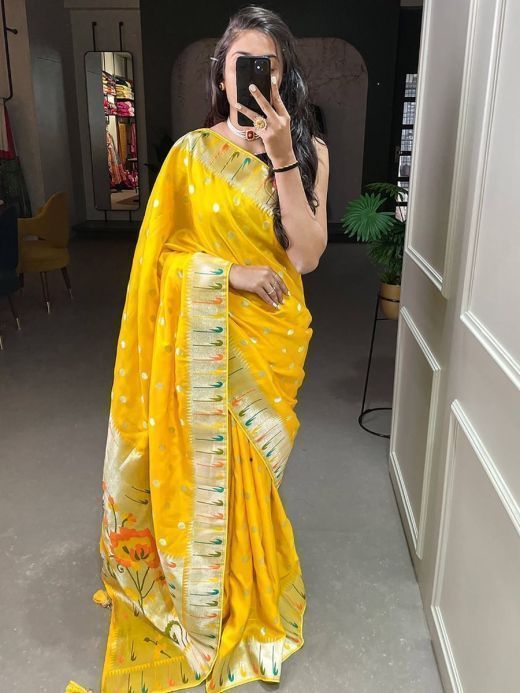Introduction
The Banarasi weaving silk saree is an epitome of timeless elegance and cultural heritage in the world of traditional Indian attire. Renowned for its intricate craftsmanship and exquisite design, this saree has captivated the hearts of women across generations. In this article, we will delve into the rich history and unparalleled artistry behind the Banarasi weaving silk saree, celebrating its enduring legacy in the tapestry of Indian culture.
A Glimpse into History
The roots of the Banarasi weaving silk saree can be traced back to the ancient city of Varanasi, often referred to as Banaras, located in the northern state of Uttar Pradesh, India. This city, steeped in history and spirituality, has been the epicenter of silk weaving for centuries. The tradition of crafting Banarasi silk sarees dates back to the Mughal era, when Persian motifs and designs began to influence Indian textile artistry.
The Art of Banarasi Weaving
What sets the Banarasi weaving silk saree apart is its meticulous craftsmanship. These sarees are handwoven by skilled artisans who have inherited the art of weaving from their forefathers. The sarees are woven on traditional handlooms, a process that demands precision and patience. Each saree can take several weeks, or even months, to complete, depending on its complexity.
The Banarasi weaving technique involves the use of pure silk threads, resulting in a fabric that is not only lustrous but also incredibly soft and comfortable to wear. The sarees are adorned with intricate zari work, which is the art of weaving metallic threads (usually gold or silver) into the fabric to create intricate patterns and motifs. These motifs often draw inspiration from nature, such as floral patterns, peacocks, and paisleys, as well as geometric shapes and traditional Indian designs.
Varieties of Banarasi Weaving Silk Sarees
Banarasi silk sarees come in a variety of styles, each with its unique characteristics. Some of the most popular types include:
- Katan Silk:This is the purest form of Banarasi silk, known for its smooth texture and luxurious finish. Katan silk sarees are often preferred for bridal wear.
- Organza Silk:Lightweight and sheer, organza silk sarees are perfect for summer weddings and special occasions. They feature delicate embroidery and zari work.
- Georgette Silk:Georgette silk sarees have a slightly crinkled texture and are adorned with intricate patterns. They are comfortable to drape and ideal for formal events.
- Tussar Silk:Tussar silk Banarasi sarees have a unique texture and a more rustic appeal. They are often chosen for a traditional yet distinctive look.
A Timeless Legacy
Banarasi weaving silk sarees have transcended time and fashion trends, remaining a symbol of grace and tradition. They have been favored by Indian royalty and continue to be a staple in every Indian woman’s wardrobe. Whether worn on weddings, festivals, or any grand occasion, the Banarasi silk saree exudes an aura of sophistication and grandeur.
In recent years, these sarees have also gained popularity on the global stage, with fashion enthusiasts from around the world appreciating their craftsmanship and beauty. International celebrities have been spotted donning Traditional Indian Saree at various red carpet events, bringing global attention to this iconic piece of Indian culture.
Conclusion
The Banarasi weaving silk saree is not just a piece of clothing; it’s a work of art that encapsulates the rich heritage and artistic prowess of India. With its timeless appeal and enduring elegance, it continues to be a beloved choice for women who seek to embrace tradition while making a fashion statement. As we celebrate the Banarasi weaving silk saree, we honor the artisans whose skill and dedication have kept this exquisite tradition alive for centuries, ensuring that it remains an integral part of India’s cultural tapestry.

